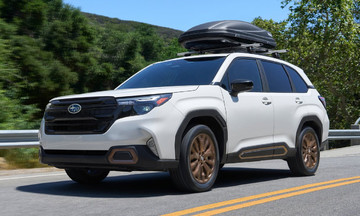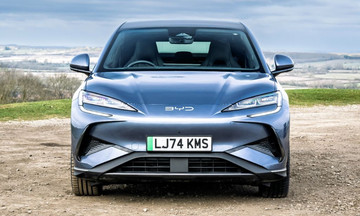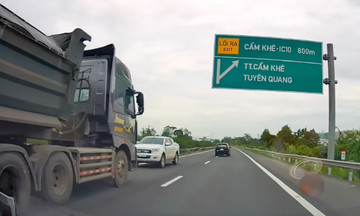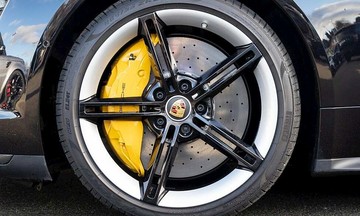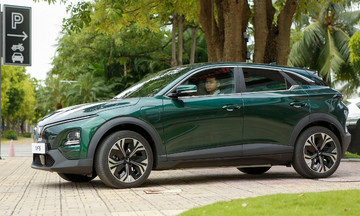By 2023, the total number of electric two-wheelers in China reached 420 million, with one in every three people owning one, according to Daxue Consulting. This surge in electric two-wheeler ownership has led to a corresponding increase in charging infrastructure.
Each city in China has adopted different approaches to accommodate local culture, habits, and existing infrastructure.
Centralized charging stations provide a convenient solution in larger cities.
Nanning, known as China's "green city," has implemented various solutions to manage traffic, parking, and charging for millions of electric two-wheelers. The city has built numerous public charging stations, designated charging areas, and installed charging points outside residential areas. Furthermore, Nanning has expanded its network of fast charging and battery swapping stations to cater to delivery drivers' frequent travel needs while mitigating the risks associated with home charging.
 |
A battery swapping station for electric two-wheelers in China. Photo: Tower Energy |
A battery swapping station for electric two-wheelers in China. Photo: Tower Energy
In other developed Chinese cities like Zhejiang, public charging stations for electric two-wheelers are typically sheltered, equipped with multiple outlets connected to a payment gateway. Riders often carry their own chargers for convenient charging on the go.
Centralized charging stations enhance safety with fire suppression systems and can be found in various locations, including apartment basements, roadside kiosks, public parking lots, near supermarkets, and bus stops. Each station typically has 6 to 20 charging outlets.
Payment and charging time management are handled through popular all-in-one apps like Alipay and WeChat. These apps also facilitate station location, pricing, and scheduling. Charging fees are based on duration and power consumption. Typically, a 240-minute charge with power under 300W costs only 1 CNY (0.14 USD).
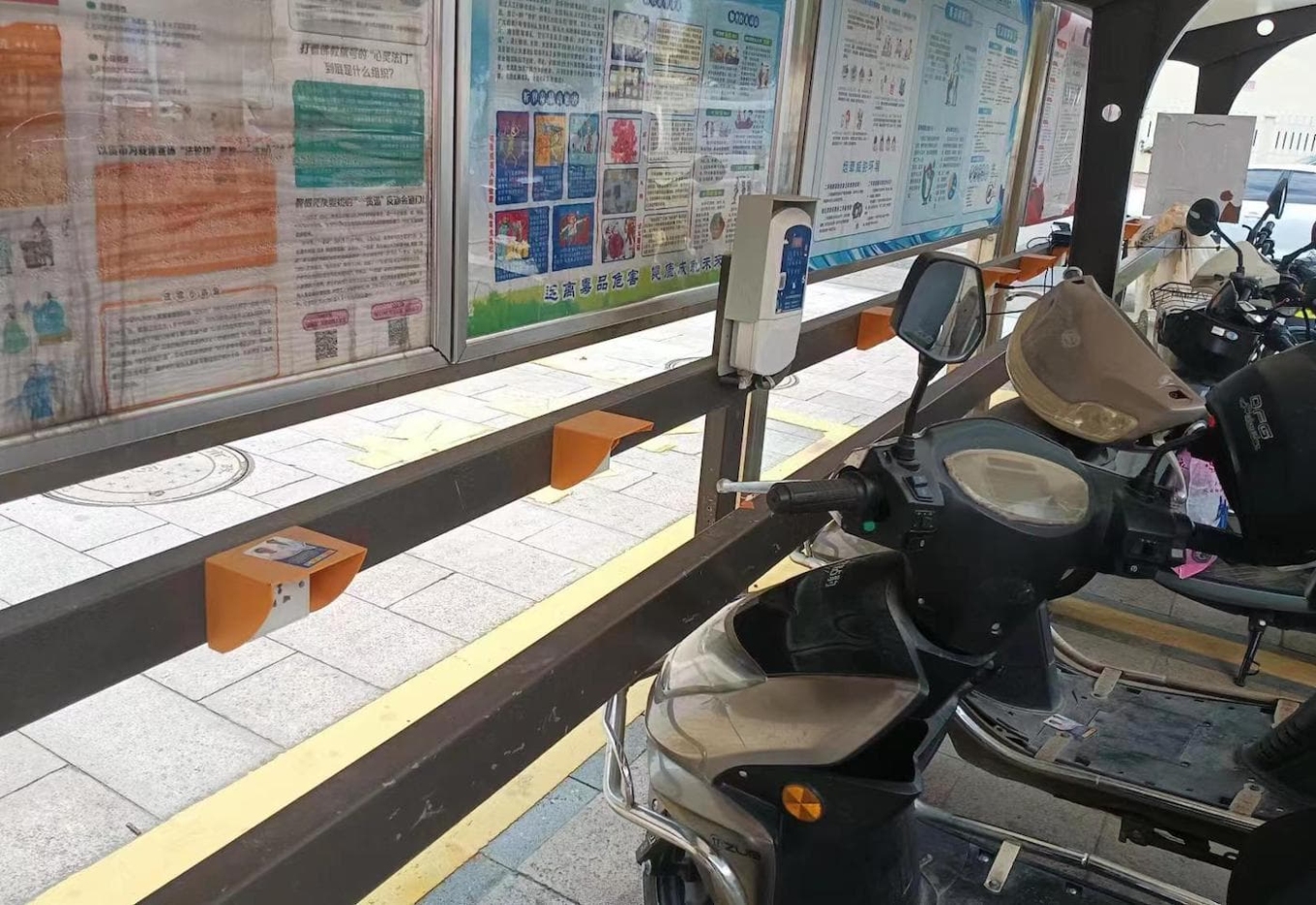 |
A centralized charging station for electric two-wheelers in Zhejiang, China. Photo: Electrek |
A centralized charging station for electric two-wheelers in Zhejiang, China. Photo: Electrek
Having a centralized charging station outside one's home or workplace enhances safety. Such stations can even be equipped with appropriate fire suppression systems on the ceiling for emergencies.
Smaller cities have seen a rise in individually owned charging boxes.
In addition to the organized centralized stations in large cities, some areas in China have adopted another charging solution: residents invest in "charging boxes" to attract customers and generate additional income.
In 2022, a writer from the "frog" website, part of the global creative group Capgemini Invent, visited Chengdu, the capital of Sichuan province. During this trip, the writer observed bright yellow boxes on walls and sidewalks throughout the city, often clustered around convenience stores, grocery shops, or electric two-wheeler repair shops.
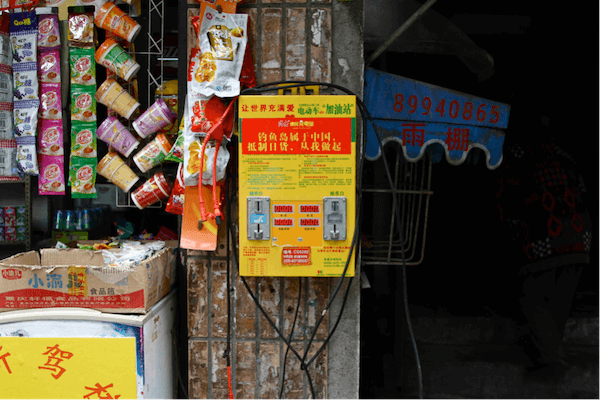 |
Coin-operated "charging box" in Sichuan, China. Photo: frog |
Coin-operated "charging box" in Sichuan, China. Photo: frog
These yellow boxes are street-level charging infrastructure, powering tens of thousands of electric bicycles and two-wheelers in Chengdu. This development comes as the number of electric bicycles in China surpassed 200 million in 2022.
While cars remain the dominant mode of transportation, with around 2.2 million vehicles, Chengdu's flat terrain and mild year-round climate make electric two-wheelers a popular choice. The large number of electric bicycle and two-wheeler users has led to a corresponding increase in these small charging boxes. A 10-minute charge typically costs 1-1.5 CNY (0.14-0.21 USD), mostly paid with coins, so shops with these boxes always have change on hand.
There are multiple ways to acquire these charging boxes. Some businesses, mainly electric two-wheeler repair shops, purchase them outright for about 1,100 CNY (175 USD). Other convenience stores in high-traffic areas are approached by manufacturers offering profit-sharing models, where the manufacturer installs the box for free and takes half of the monthly revenue.
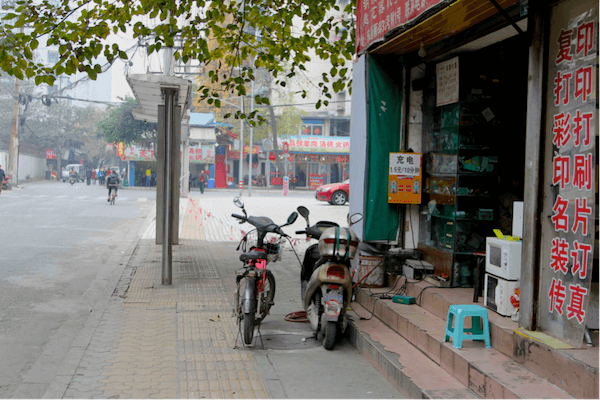 |
Electric two-wheelers charging at a grocery store in Sichuan, China. Photo: frog |
Electric two-wheelers charging at a grocery store in Sichuan, China. Photo: frog
According to one convenience store owner, customers often buy food and drinks while their vehicles charge, especially on weekends or during evening rush hour. Others simply use their phones. Those who charge at repair shops generally don't use any additional services.
Ho Tan



